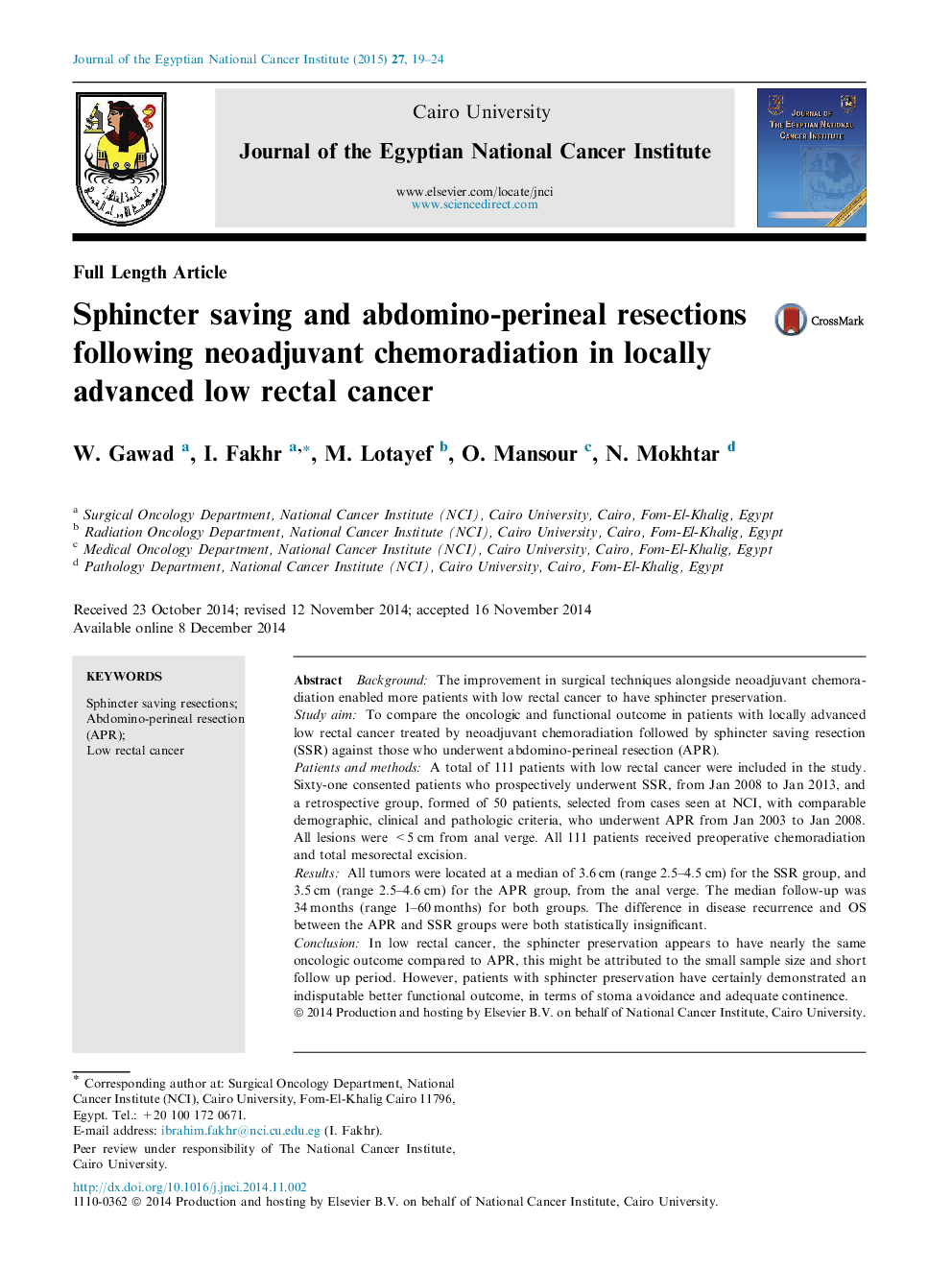| Article ID | Journal | Published Year | Pages | File Type |
|---|---|---|---|---|
| 3988914 | Journal of the Egyptian National Cancer Institute | 2015 | 6 Pages |
BackgroundThe improvement in surgical techniques alongside neoadjuvant chemoradiation enabled more patients with low rectal cancer to have sphincter preservation.Study aimTo compare the oncologic and functional outcome in patients with locally advanced low rectal cancer treated by neoadjuvant chemoradiation followed by sphincter saving resection (SSR) against those who underwent abdomino-perineal resection (APR).Patients and methodsA total of 111 patients with low rectal cancer were included in the study. Sixty-one consented patients who prospectively underwent SSR, from Jan 2008 to Jan 2013, and a retrospective group, formed of 50 patients, selected from cases seen at NCI, with comparable demographic, clinical and pathologic criteria, who underwent APR from Jan 2003 to Jan 2008. All lesions were <5 cm from anal verge. All 111 patients received preoperative chemoradiation and total mesorectal excision.ResultsAll tumors were located at a median of 3.6 cm (range 2.5–4.5 cm) for the SSR group, and 3.5 cm (range 2.5–4.6 cm) for the APR group, from the anal verge. The median follow-up was 34 months (range 1–60 months) for both groups. The difference in disease recurrence and OS between the APR and SSR groups were both statistically insignificant.ConclusionIn low rectal cancer, the sphincter preservation appears to have nearly the same oncologic outcome compared to APR, this might be attributed to the small sample size and short follow up period. However, patients with sphincter preservation have certainly demonstrated an indisputable better functional outcome, in terms of stoma avoidance and adequate continence.
